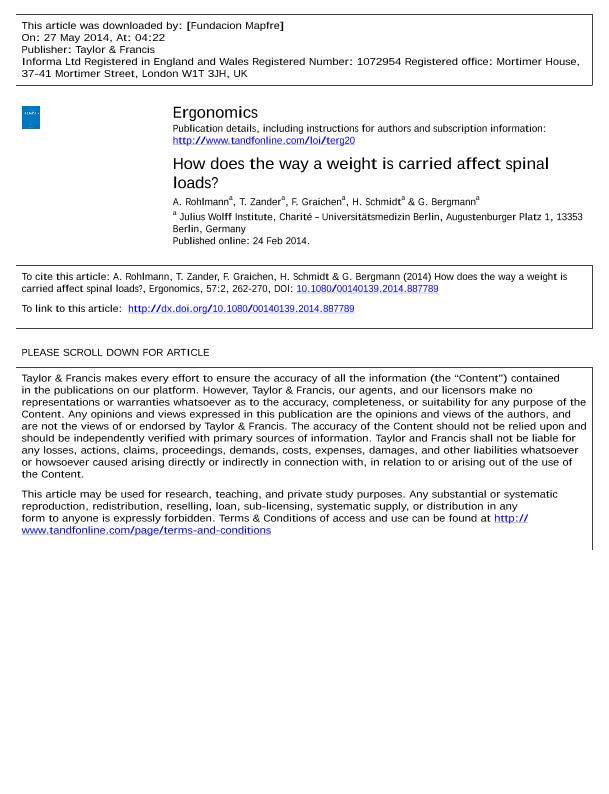How does the way a weight is carried affect spinal loads?

Contenido multimedia no disponible por derechos de autor o por acceso restringido. Contacte con la institución para más información.
| Tag | 1 | 2 | Value |
|---|---|---|---|
| LDR | 00000cab a2200000 4500 | ||
| 001 | MAP20140019267 | ||
| 003 | MAP | ||
| 005 | 20140530130412.0 | ||
| 008 | 140527e20140203esp|||p |0|||b|spa d | ||
| 040 | $aMAP$bspa$dMAP | ||
| 084 | $a875 | ||
| 245 | 0 | 0 | $aHow does the way a weight is carried affect spinal loads?$cA. Rohlmann...[et.al] |
| 520 | $aPeople often have to carry a weight which increases the spinal load. Few in vivo measured spinal loading data exist for carrying a weight. The aim of this study was to measure the force increase on a vertebral body replacement (VBR) caused by carrying weights in different ways. A telemeterised VBR allowing the measurement of six load components was implanted in five patients suffering from lumbar vertebral body fractures. The patients carried different weights laterally in one or both hands, in front of the body and in a backpack. The force increase with respect to standing was more than twice as high for carrying a weight in front of the body compared with carrying it laterally. A weight of 10 kg in a backpack led to an average force increase of only 35 N. The position of the carried weight relative to the spine strongly affected the spinal load. | ||
| 773 | 0 | $wMAP20100019818$tErgonomics : the international journal of research and practice in human factors and ergonomics$dOxon [United Kingdom] : Taylor & Francis, 2010-$x0014-0139$g03/02/2014 Volumen 57 Número 2 - febrero 2014 |

